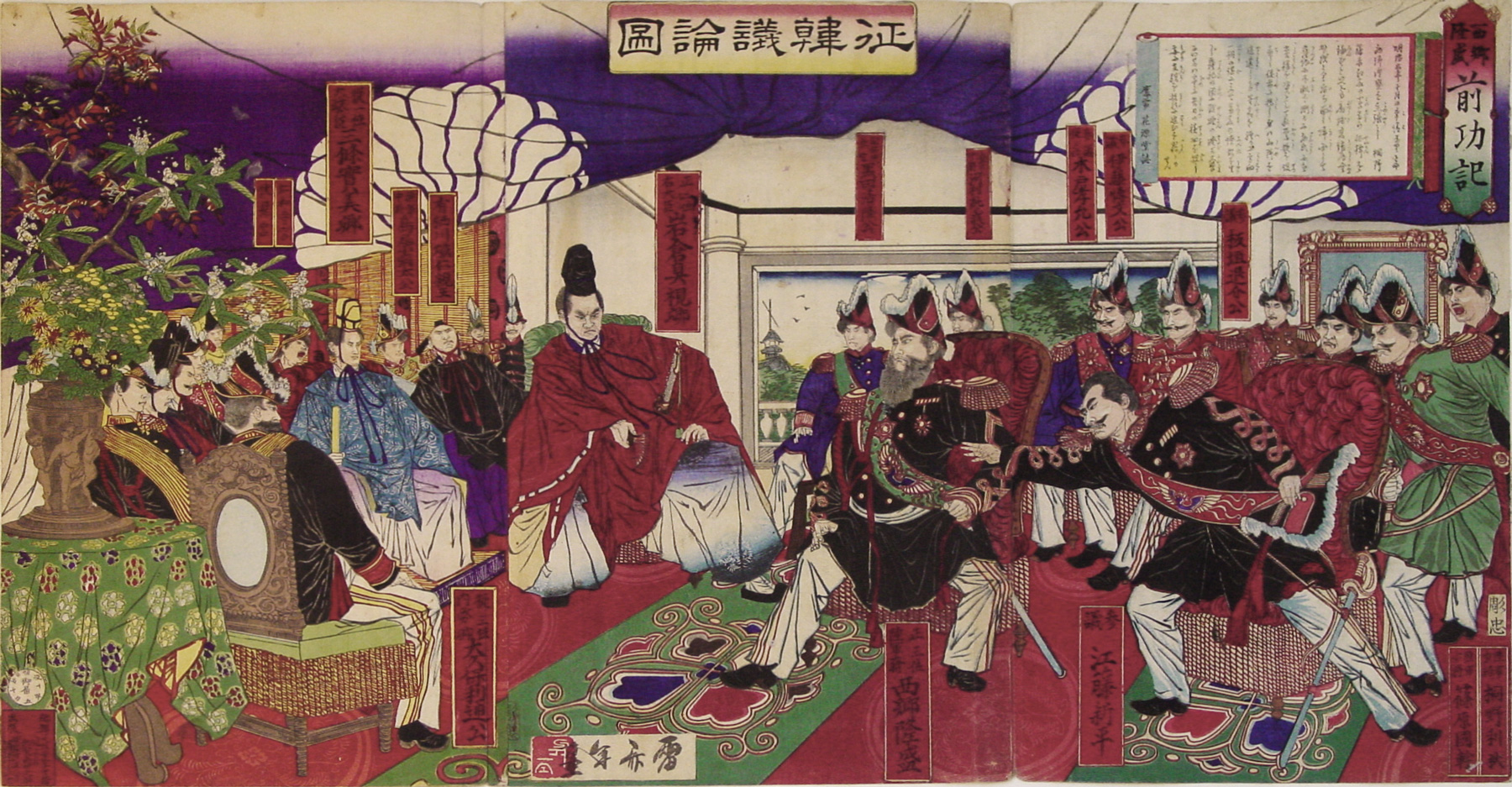About This Print
This 1877 print depicts the 1873 seikanron debates in the Meiji government's Court Council over whether to invade Korea for ignoring the diplomatic overtures of the Meiji government and "insulting" the Japanese nation. This print is one of many issued in 1877 depicting seikanron, whose outcome led to Saigō Takamori's resignation from the government. (Saigō would go on to lead the 1877 Satsuma Rebellion against the Meiji government.)
The leaders of opposing factions, Iwakura and Saigō, are prominently shown in the center panel with their partisans shown in the side panels. The debates were fueled by political infighting and the artist Suzuki Toshimoto (active c. 1877-1890s) captures the intensity of emotions.
Some of the "Players" Pictured
Sources: Website of Nation Diet Library "Portraits of National Historical Figures" http://www.ndl.go.jp/portrait/e/contents/index.html and Emperor of Japan: Meiji and His World, 1852-1912, Donald Keene, Columbia University Press, 2002, p. 228-234.Sixteen red rectangular cartouches provide the names of the figures participating in the debate, although it is unclear if all of the named figures actually participated. The following were all members of the Court Council (aka Council of State) whose names I have confirmed through the above cited sources.
The following major figures in the debate are depicted in the print.
Saigō Takamori 西郷隆盛 - hero of the battles that brought an end to the Tokugawa shogunate in 1868, ushering in the Meiji government that made Japan into a modern nation. Court councilor and leader of the Seikanron faction arguing to send a last diplomatic mission, led by himself, to Korea before launching an invasion. Saigō knew the mission would fail, its failure serving as the final justification for Japan's invasion.
Etō Shimpei 江藤新平 - Minister of Justice and court councilor who sided with Saigō and resigned from his post due to a defeat in the debates.
Iwakura Tomomi 岩倉具視 - Minister of the Right who led the "Iwakura mission," a two-year journey visiting European countries and the United States to renegotiate the unequal treaties and gather information for Japan's modernization. Instrumental in defeating Saigō's plan and preventing the invasion of Korea.
Okubo Toshimichi 大久保利通 – member of the "Iwakura mission" who sided with Iwakura against Saigō. As Home Minister he suppressed regional rebellions by the former samurai class that ended with the Satsuma Rebellion, but was assassinated by a former samurai in 1878.
Sanjo Sanetomi 三条実美 - imperial envoy. Sided with Iwakura in the debate against Saigō. He assumed the post of dajo daijin (grand minister of state) in 1871.
Kido Takayoshi 木戸孝允 – court councilor. He became sangi (councilor) in 1870. In 1871, he took part in the Iwakura mission as deputy envoy. He sided with Iwakura against Saigō.
Itagaki Taisuke 板垣退助 – Minister of the Interior. As a sangi (court councilor), he ran the government temporarily after the Iwakura mission was dispatched. Siding with Saigō, he resigned in 1873 after the debates.
Kuroda Kiyotaka 黑田清隆 – statesman and army general. Objected to Saigō's plan, claiming dispute with Russia over Sakhalin was more urgent. Led a flotilla of six ships in 1876 in a show of gunboat diplomacy to weaken Chinese influence in Korea by recognizing Korean independence while imposing unequal treaty terms on them. Briefly served as provisional Prime Minister in 1896.
(Inset photos cropped from the National Diet Library)
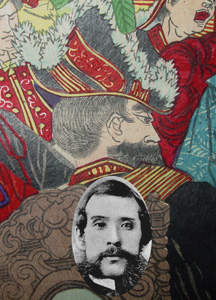 | 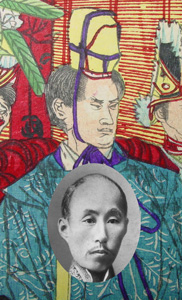 | 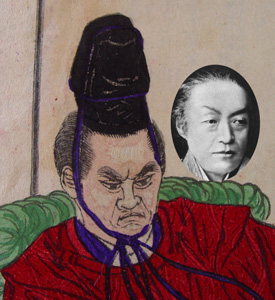 Iwakura Tomomi 岩倉 具視 |
(Inset photos cropped from the National Diet Library)
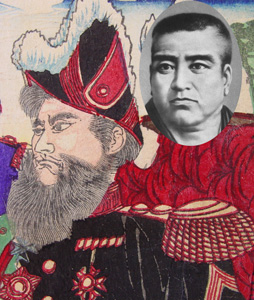 | 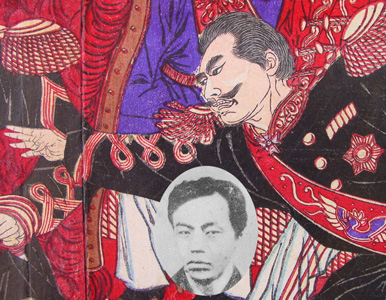 |
Seikanron (debate over conquering Korea)
Source: Emperor of Japan: Meiji and His World, 1852-1912, Donald Keene, Columbia University Press, 2002, p. 228-234.Starting in March 1870 the new Meiji government dispatched a number of diplomatic missions to Korea to redefine how relations between the two countries would be conducted.1 Each of these missions was rebuffed by the Koreans in one way or another. With each rebuff, the calls for military action against Korea became louder and with Korea’s official rebuke of Japan as “a country without laws (muho no kuni)” a popular furor was created throughout Japan and the emperor commanded his Grand Minister of State, Sanjo Sanetome, “to dispose of the Korean incident.”
Sanjo presented the Court Council (with Minister of the Right, Iwakura Tomomi, absent on his round-the-world diplomatic mission) with a list of Korea’s insults against Japan, concluding with a request to dispatch military units to “protect Japanese living in Korea.”
In response to this call, two opposing factions arose – one which supported an immediate invasion and another, under the leadership of Saigō Takamori, which argued for a last attempt at negotiation, with Saigō as the emissary, before an invasion was launched.2 While the Council initially voted to support Saigō’s proposal, Sanjo managed to delay the implementation of Saigō’s plan by lobbying with the emperor to delay any decision until Iwakura could be summoned home from abroad. Several months of political infighting ensued during which time Iwakura returned and scuttled Saigō’s plan, arguing, with Emperor Meiji’s support, that because immediate war with Korea would ensue upon Saigō’s arrival in Korea, Japan “should wait until [it] was strong before sending an embassy; otherwise, disaster might follow.”3
With his plan rejected by the emperor, Saigō and his supporters (Etō, Gotō, Itagaki and Soejima) resigned their positions in the Council using the the oft-used excuse of “illness” preventing them from carrying out their duties.
As a precursor to the 1877 Saigō-led Satsuma Rebellion, the 1873 seikanron debates were an often-seen subject in the hundreds of woodblock prints depicting scenes of the Rebellion and its major figures.
Saigo's Death Wish?
While not universally accepted, some historians point to the below passage from a Saigō letter written during seikanron as a harbinger of the Satsuma Rebellion's suicidal conclusion.
| If it is decided to send an envoy officially, I feel that he will be murdered. I therefore beseech you to send me. I cannot claim to make as splendid an envoy as Soejima, but if it is a question of dying, that, I assure you, I am prepared to do. - Saigō Takamori, July 1871 |
1 For almost 400 years relationships between the two countries were exclusively channeled through Japan’s Tsushima domain, strategically located on an island between the two nations, which operated a Wakan, or trading station, in Pusan, Korea. The new Meiji government sought to centralize all foreign relations through them while Korea’s defacto ruler, the prince regent Taewon'gun, distrustful of an increasingly westernized Japan, saw no reason to change hundreds of years of precedent.
2 Saigo knew full well that sending another delegation to Korea under his leadership would almost certainly result in war between the two countries. For his motivations in taking this position see Emperor of Japan: Meiji and His World, 1852-1912, Donald Keene, Columbia University Press, 2002, p. 232-233.
3 With the perceived ambivalence of China, Korea’s suzerain, towards Korea’s snubbing of Japan’s diplomatic overtures, many in the Meiji government believed that China would not protect Korea should Japan invade. However, there was considerable concern that Japan’s military was still not sufficiently powerful enough to invade Korea and deal with mounting threats from Western powers, most notably Russia.
PowerPoint Presentation Notes from 1-31-2017 Presentation
The Debate Over Invading Korea (Seikanron), May 15, 1877
[The disaffection of Saigō Takamori]
This print published after therebellion’s end depicts the 1873 seikanron debatein the Meiji government's Court Council over whether to invade Korea forignoring the diplomatic overtures of the Meiji government and"insulting" the Japanese nation.
Saigō Takamori wasboth saint and sinner to the Meiji government. Saigō’spopularity made the government walk an interesting line of extolling theefforts and successes of their newly reorganized military against Saigō andhis rebels without demonizing Saigō. To assist public understanding of Saigō’s actions, prints such as this one wereissued picturing Saigō, infull military dress, in heated debate with Minister of the Right, IwakuraTomomi, during deliberations in 1873over how best to discipline Korea for ignoring diplomatic overtures and insulting theJapanese nation. Saigō wasto resign his government position as a result of the rejection of hisproposals.
The Debate Over Invading Korea (Seikanron), May 15, 1877 [The disaffection of Saigō Takamori] This print published after therebellion’s end depicts the 1873 seikanron debatein the Meiji government's Court Council over whether to invade Korea forignoring the diplomatic overtures of the Meiji government and"insulting" the Japanese nation. Saigō Takamori wasboth saint and sinner to the Meiji government. Saigō’spopularity made the government walk an interesting line of extolling theefforts and successes of their newly reorganized military against Saigō andhis rebels without demonizing Saigō. To assist public understanding of Saigō’s actions, prints such as this one wereissued picturing Saigō, infull military dress, in heated debate with Minister of the Right, IwakuraTomomi, during deliberations in 1873over how best to discipline Korea for ignoring diplomatic overtures and insulting theJapanese nation. Saigō wasto resign his government position as a result of the rejection of hisproposals. |
Print Details
| IHL Catalog | #497 |
| Title or Description | The Debate Over Invading Korea (Depiction of Seikanron 征韓議論図 - inscription on top center cartouche) |
| Series | |
| Artist | Suzuki Toshimoto (active c. 1877-1890s) |
| Signature |  |
| Seal | square red seal reading 年基 "Toshimoto" (see above) |
| Publication Date | May 15, 1877 [contained in nengō (年号) seal located bottom left of left-most sheet]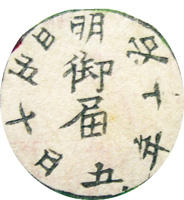 |
| Publisher | 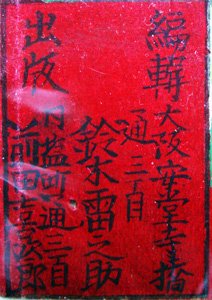 編輯 [editing] 鈴木雷之助 [Suzuki Rainosuke] 出版 [publisher] 前田喜次郎 [Maeda Kijirō] |
| Carver | 彫忠 Hori Tada?  |
| Impression | excellent |
| Colors | excellent |
| Condition | fair – three panels joined and backed; margins trimmed to image; minor soiling; minor worm damage and paper loss along edges |
| Genre | ukiyo-e; senso-e |
| Miscellaneous | |
| Format | vertical oban triptych |
| H x W Paper | 14 x 27 1/8 in. (35.6 x 68.9 cm) |
| Literature | |
| Collections This Print | Tokyo Keizai University 桜井文庫no.4032 |

